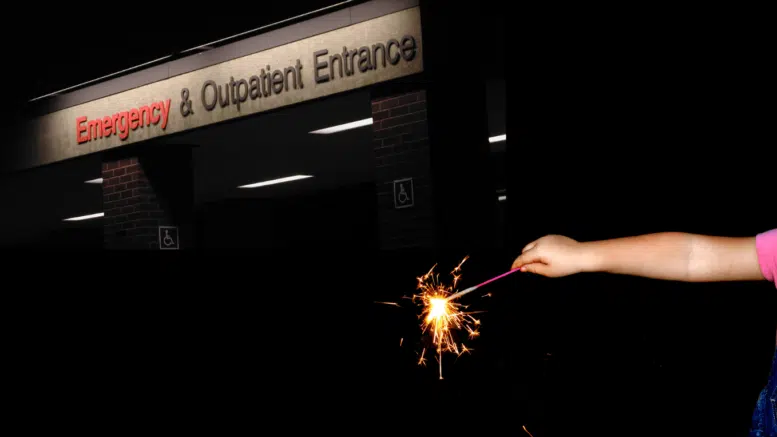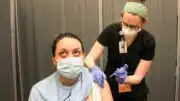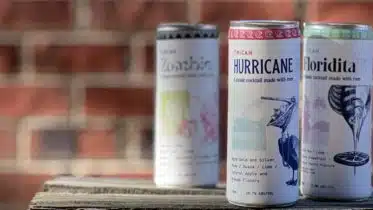By Jennifer Fernandez
Booker T. King, a surgeon and director of the North Carolina Jaycee Burn Center at UNC Health has seen some gruesome things in his career, but one case in particular sticks with him.
King, an Army veteran, was stationed in San Antonio, Texas, when a child, about 10 or 11 years old, came in to the hospital. He had lost most of his fingers and injured his eye playing with fireworks.
Credit: Provided by UNC Health
“They were trying to see how long they can hold it … before they can throw it up in the air,” he said.
This time of year, emergency doctors see an uptick in burns and sometimes worse injuries related to fireworks.
Many of them involve children. In North Carolina, 5- to 17-year-olds make up 21 percent of emergency department visits for fireworks-related injuries, state data shows.
About 42 percent of fireworks-related injuries treated in emergency rooms nationwide involve burns, according to an annual report by the U.S. Consumer Product Safety Commission. Hands and fingers make up about 35 percent of injuries, followed by head, face and ears at 22 percent.
“When there are injuries to the fingers and the hands and eyes in children, it definitely sticks with you,” said Dan Park, medical director of UNC Health’s Pediatric Emergency Department. “Those are the ones that I can’t unsee and the ones that I remember. And those are always good reminders on reminding parents and kids to be safe around fireworks.”

N.C. trends
North Carolina law permits residents to use what are considered novelty fireworks, such as fountains, smoke bombs, party poppers and sparklers. The list of illegal devices — anything that explodes or is projected into the air — includes firecrackers, ground spinners, bottle rockets, Roman candles, mortars, M-80s and aerial fireworks.
Professionals putting on public displays must have a license and obtain a permit.
Several pediatric doctors who spoke with NC Health News said that they believe the state’s restrictive fireworks laws help keep the number of deaths and injuries down in North Carolina.
Still, the state’s emergency departments treat about 200 fireworks-related injury victims every year, according to the most recent data collected by the North Carolina Injury and Violence Prevention Branch of the state Department of Health and Human Services.
Not surprisingly, 70 percent of those injuries happen in July, the month we celebrate U.S. independence with family gatherings, grilling out and fireworks.
At ECU Health Medical Center, about 13 cases over the past five years have been serious enough to be activated as a trauma, meaning the victim had significant soft tissue injury or burns, said Shannon Longshore, pediatric trauma surgeon and medical director of the pediatric trauma program.
When to go to ER
Doctors told NC Health News that minor burns caused by fireworks can often be taken care of at home. Victims should be taken to an emergency room in the following instances:
- If there is an eye injury.
- If the flesh wound is large.
- When pain control is an issue.
- If the burn crosses over joints, especially in the hands.
- If the burned skin starts bubbling up.
- If a burn looks painful but there is no pain, which indicates a burn that’s deeper than surface nerves.
- When you are not sure how serious the injury may be.
Common injuries

Most fireworks-related burns are contact burns that are treated in the emergency department and the victim is sent home, Longshore said.
Minor burns are common with fireworks. When there are major burns, that’s usually not caused by the fireworks directly, but rather because clothing or something else caught fire and that caused the burns, King said.
King has seen children as young as 2 or 3 years old with injuries from fireworks. Often, those come from sparklers. He said adults wrongly see sparklers as something that children can handle.
“They look innocent, but they actually can cause a lot of injuries,” King said. “Don’t think these things are innocent, especially to young children.”
Sparklers can burn at up to 2,000 degrees Fahrenheit — hot enough to melt glass and some metals.
Park said that glow sticks, while not as fun as sparklers, are a great alternative.
One of the more common misadventures with fireworks is someone trying to relight a dud, Park said.

“Don’t be a hero. You’re not impressing anyone. Don’t relight dud fireworks,” Park said. “I don’t think that that ever goes well.”
King, a retired colonel with the U.S. Army Medical Corps, saw devastating injuries to children caused by improvised explosive devices, or IEDs, while serving in Iraq and Afghanistan.
Some happened when children were recruited by combatants to plant the devices, and others when children were going about their daily lives and stumbled across one, he said.
Fireworks can be just as damaging.
“Blast injuries are blast injuries,” King said. “They cause devastating-type trauma.”
Recommendations
NC Health News spoke with several doctors from across the state about fireworks safety around children. Their main recommendation is to leave fireworks to the professionals. However, if you plan to use them at home, here are some recommendations:
- Don’t light fireworks in glass containers. The explosion could spray glass shards into bystanders.
- Anyone setting off fireworks should remain sober.
- Stay a safe distance away, even at public displays.
- Make sure there’s nothing flammable nearby.
- Never hold a child in your arms while using a sparkler or lighting a firework.
- Never hold or light more than one sparkler at a time.
- Have a bucket of water nearby to douse sparklers and spent or dud fireworks.
- Don’t throw fireworks at other people.
- Supervise children any time they’re around fireworks.
National trends
Last year, U.S. hospitals treated 9,700 victims with fireworks-related injuries, according to the latest report by the U.S. Consumer Product Safety Commission.
About 6,400 of those injuries happened between June 16 and July 16, with children younger than 15 accounting for 31 percent of the estimated injuries.
Injury rates were highest for those ages 15 to 19 and children ages 5 to 9. The injury rate for the older group was 4.5 injuries per 100,000 people. For the younger group, the rate was 4 injuries per 100,000 people.
Last year, firecrackers led to about 800 injuries treated in emergency departments across the country from June 16 to July 16. Sparklers led to about 700 injuries being treated during that same time.
About 42 percent of injuries involved burns.
Nearly three-quarters of people injured were treated at an emergency department then released.

Deaths
While injuries are the more common outcome, fireworks can also be deadly.
Nationally, there were at least eight nonoccupational fireworks-related deaths last year and 11 the year before.
State data for the past two years was not available. However, at least one death in 2022 was attributed to fireworks, according to media reports. Authorities responded on June 10 to a brush fire in the Lenoir County town of La Grange. The fire reached a structure that contained commercial-grade fireworks, which exploded, killing property owner Randy Herring and injuring three firefighters.
Herring’s death is not included in the 2022 national list of 11 deaths, which included two involving children 17 or younger. The death toll could be higher as data collection and confirmation is not complete for 2022 or 2023, the authors of the national report wrote.
The national report does not include the names of those who died or indicate the state where the death occurred. However, news reports at the time match the details on the two child fatalities.
On June 17, 2022, authorities responded to a house explosion in Black Jack, Missouri, that killed 17-year-old Christopher Jones and another person. The blast injured four other people. The local fire chief said that young people were in the garage making fireworks with explosives.
On July 3, 2022, 11-year-old Camrynn Ray McMichael died in an accident involving a “fireworks mortar.” He was a rising sixth grader at Mount Vernon Junior High School in Mount Vernon, Indiana.
He died when the shell of a mortar-type device he was holding above his head shot out of the bottom of the mortar, according to the summary in the Consumer Product Safety Commission report.
His mother told investigators that she “held her son’s broken skull and brain in her hands.” He was pronounced dead before air transport could arrive to take him to a hospital. Detectives believe the device malfunctioned.
Two of the eight deaths last year also involved children.
In Amarillo, Texas, a 15-year-old boy died after being hit by a firework. He was leaning over a lit mortar-style firework at a public park when the mortar shell allegedly ignited from the tube and struck him in the chest, according to the national report. Police did not release his name.
Nick Layne, 17, died on July 4 after being struck by a mortar-style firework that he was lighting in his hand at a Fourth of July party at a home in Louisa County, Virginia. The firework exploded, burning his hands, face, chest and arms. The official cause of death was recorded as “blunt force trauma to torso,” according to the national report.
The grieving family told local media outlets that people should be aware of the potential danger with fireworks.
“A life-changing, no words kind of pain and emotion, just unreal,” Michael Layne said about losing his son

‘Injury season’
While fireworks-related injuries tick up mostly around the July Fourth holiday, other injuries involving children pick up throughout the summer.
“Summertime in general is a high trauma time for our children, because they are not in school,” Longshore said. “So, they are out running around, riding bicycles, playing, swimming, all those things.”
Urgent care centers don’t see many fireworks injuries, which tend to end up at emergency rooms, but they do see a lot of strains, sprains and broken bones this time of year, said Chris Branner, specialty medical director of Urgent Care Services for Atrium Health.

“I call this season ‘injury season,’” Branner said. “In the wintertime, I call it ‘sick season.’”
Over the past year, the 30 urgent care centers in Atrium’s Charlotte area only handled a handful of fireworks-related injuries out of 400,000 adult and child patient visits, Branner said.
In general, Branner said urgent care centers see more injuries to arms and legs with children.
That can range from broken fingers or jammed fingers from catching a ball or playing basketball to kids riding scooters and not wearing shoes, leading to injuries to the toenails, toes and feet, he said.
Children walking around barefoot in the yard will come in with splinters.
“And then whenever a child falls, the natural inclination is to reach out with their hands and arms … and when you do that, that puts pressure either on the wrist or the elbow, and so we see wrist and elbow injuries as a result of that natural reflex to catch oneself from falling.”
Family gatherings provide opportunities for other injuries as well, he said.
“You don’t think about the danger of making s’mores,” Branner said. “But I’ve got fire and sharp pokey objects that come together. A melted marshmallow is a really hot sticky thing.”
He said parents need to be mindful and follow common sense. Be aware of surroundings to make sure they are safe for children. Get all of the protective gear if kids are going to be skateboarding, riding a bike or playing sports.
“All those things are recommended for a reason,” he said.














